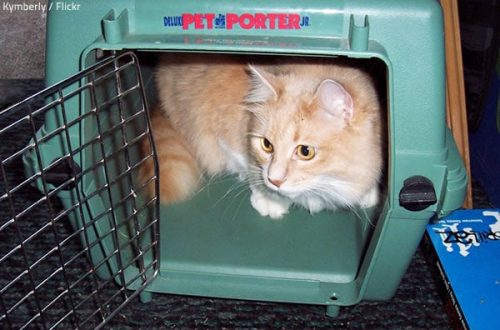
They took a cat from the street: what’s next?
So, you adopted a stray cat. For some reason, it was not possible to find the owners of the animal, or everyone liked the cat very much, and you decided to keep it. What to do with a new pet and how to adapt it to the conditions of life in the house?
How to spend the first day?
In order for the new tenant to be healthy and happy, it is necessary from the first day to take measures to organize the home space and socialize the pet. A stray cat may take time to get used to its new environment. If you have adopted a cat that has previously had owners, then it may already be socialized.
- First of all, organize a quarantine room for the animal, that is, temporary isolation, in which it will be the first week or two. Until the cat is vaccinated and treated for internal and external parasites, keep it away from children and other pets. Let your new pet get used to the sounds and smells of your home. Do not scare the cat and do not try to stroke it often – it takes time to adapt. If the cat does not want to get out of the carrier, you do not need to pull it out by force. After a while, she will want to eat and will go out on her own. Bowls with water and food, as well as a tray, should be kept in the quarantine room for the first time.
- After the animal calms down and gets used to the new conditions a little, try to wash it. Most likely, the pet will be very scared, as it is not used to such procedures. Protect your hands with long gloves and your face with a mask to avoid scratches and bites. It is best to wash a cat with the help of a shower and together – one person holds the pet, the second lathers and rinses off the foam. Use a special cat shampoo, including a dual-action one: such a shampoo both cleanses and has an antiparasitic effect. After washing, the cat should be gently wiped with a towel and left to dry in a warm place without drafts. It is better not to use a hair dryer: it can greatly frighten the pet, and if it is not used correctly, it can lead to burns.
- Take the cat to the veterinary clinic. There it is carefully examined and the necessary tests will be done. The veterinarian will give recommendations about sterilization and vaccinations. After the initial examination, the veterinarian will prescribe a comprehensive treatment for internal and external parasites (fleas, ticks, helminths) with special preparations. The mandatory set of vaccinations includes vaccination against rabies, feline distemper (panleukopenia), calicivirus, viral rhinotracheitis. A specialist may recommend vaccinating your cat against chlamydia and leukemia. Please note that vaccination and sterilization of a cat can only be carried out in specialized clinics.
- Talk to your veterinarian about a balanced diet for your cat. The right food will help keep her healthy and active.
- Purchase bowls, toys, a tray, tray filler, and a scratching post from the pet store. It is necessary to accustom a cat to use a tray and a scratching post from the very first day of her stay in your house. Put the tray in a secluded place and take the cat there. Most likely, an adult animal will intuitively understand what needs to be done. The kitten should be taken to the tray every time you notice that he is crouching and scratching the surface with his paws. It will turn out over time to accustom a pet to a tray and to a scratching post.
In order to successfully socialize a cat in your home, try not to insist on contact with the cat and immediately introducing her to the rest of the family. Give your new pet time. The older the animal and the longer it lived on the street, the longer it will take adaptation. A small kitten will get used to new conditions much faster. In any case, time, patience and kindness are the main conditions for painless adaptation of the animal. A few weeks will pass, and your fluffy beauty will begin to purr and come to your knees for her portion of affection.





